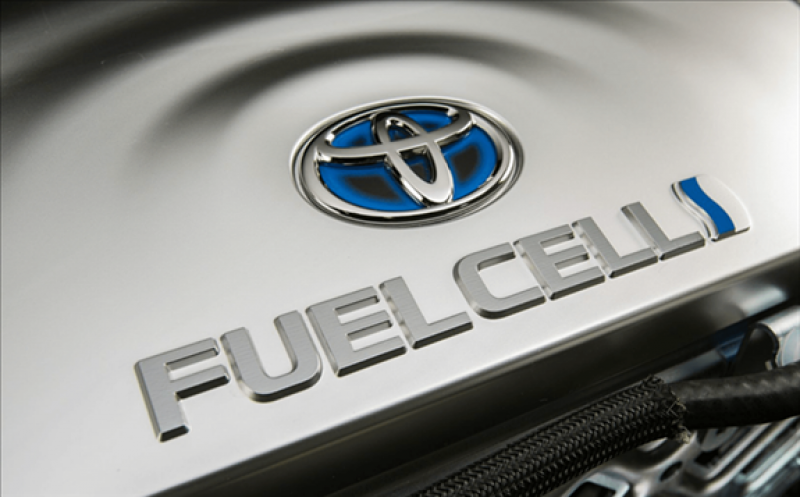Tesla CEO Elon Musk has dismissed hydrogen fuel cells as “mind-bogglingly stupid,” and that is not the only negative thing he had to say.

He has called them “fool cells,” a “load of rubbish,” and told Tesla shareholders at an annual meeting years ago that “success is simply not possible.”
Not everyone has embraced Musk’s battery-or-bust vision of the future, however. In fact, many automakers have ignored his sage advice.
According to a report in OilPrice.com, Toyota Motor Corp. appears to be moving fast in that direction — announcing on Friday it has developed a fuel cell system model that will help the world achieve carbon neutrality goals.
Not only that, but the world’s largest car manufacturer said it is looking to start selling it after the spring this year in a bid to promote hydrogen use.
According to Toyota, the new module — which could be a game-changer in the industry — can be used by companies developing fuel cell applications for trucks, buses, trains, and ships, as well as stationary generators.
The fuel cell system module can be directly connected to an existing electrical instrument provided with a motor, inverter, and battery, Toyota said, noting that the modularization significantly improves convenience.
The “module has achieved a world-class, top level output density per unit volume,” said Toyota, adding that the maintenance requirements are simple and infrequent.
Toyota is selling the Mirai fuel cell vehicle running on hydrogen, and plans to boost tenfold the global sales of the Mirai with the second-generation Mirai.
The new Toyota Mirai will have a 30% increase in driving range to around 650 kilometers (404 miles), the carmaker said at the end of November.
Fuel cell electric vehicles (FCEVs) combine hydrogen stored in a tank with oxygen from the air to produce electricity, with water vapor as the by-product, CNBC reported.
Unlike more common battery-powered electric vehicles, fuel cell vehicles don’t need to be plugged in, and current models all exceed 300 miles of range on a full tank.
They’re filled up with a nozzle almost as quickly as traditional gas and diesel vehicles. While fuel cell vehicles themselves only emit water vapor from their tailpipes, the Union of Concerned Scientists notes that producing hydrogen can lead to pollution.
Though renewable sources of hydrogen, such as agricultural and waste sites, are increasing, the majority of the hydrogen sourced for fuel comes from traditional natural gas extraction.
Still, the impact is still less than gas-powered counterparts.
This issue of concern, is cost — it remains a hurdle.
The average price for hydrogen fuel in California is about US$16/kg — gasoline is sold by the gallon (volume) and hydrogen by the kilogram (weight).
To put that in perspective, 1 gallon of gasoline has about the same amount of energy as 1 kg of hydrogen.
Most fuel cell electric cars carry about 5 kg to 6 kg of hydrogen but go twice the distance of a modern internal combustion engine car with equivalent gas in the tank, which works out to a gasoline-per-gallon equivalent between $5 and $6.
Apart from Toyota, Hyundai Motor Corp. — which continues to hedge its bets by developing internal combustion, hybrid and battery-electric technologies — has been working on making hydrogen fuel cells commercially viable.
The NEXO is part of this – a technological flagship for Hyundai’s fuel-cell technology, of which it hopes to sell “several thousand units a year” in select markets all over the world, BBC’s Top Gear reported.
“We expect the Northeast to be the next big region of hydrogen infrastructure growth,” said Derek Joyce, spokesman for Hyundai’s product and advanced powertrain group.
The NEXO midsize crossover has earned an EPA range rating of 380 miles, longer than any battery-powered EV on the market.
Honda also has made a big commitment to hydrogen.
There are currently nearly 1,100 Honda Clarity Fuel Cell vehicles on the road in the US, said Natalie Kumaratne, a Honda spokeswoman.
Honda only offers the Clarity Fuel Cell in California for lease — it offers battery electric power and hybrid versions of the car for lease or sale.
Out of the 20,174 total Claritys sold or leased in 2018, 624 were fuel cell variants, 948 were battery-electrics, and 18,602 were the plug-in hybrid.
Honda and Toyota have teamed up with a subsidiary of Shell Oil to build new hydrogen fueling stations in California.
Two have been built thus far, and five are in the works, Kumaratne said.
The company is advocating for stations in the Northeastern United States, with several in development.
“Partnering with other hydrogen fuel cell manufacturers and industry influencers makes sense. We all have skin in the game,” she said.
Industry giants General Motors and the Ford Motor Company are all working toward a carbon-neutral future on the EV front.
The biggest commitment came from GM, which said in January that it was going all-in toward an all-electric future, aiming to eliminate all tailpipe emissions from new light-duty vehicles by 2035 as part of a wider strategy.
Last week, Ford became the latest automaker to target an all-electric lineup, saying it too would move to all-electric passenger vehicles in Europe by 2030.
According to Car & Driver, Ford announced during its Q4 earnings report that it will invest US$22 billion in electric vehicles and US$7 billion in autonomous vehicles through 2025.
This article is reproduced at www.asiatimes.com